
Forestvale Cemetery
490
Forestvale Road
46.653552, -112.032680
All
Photos Courtesy of Forestvale Cemetery, via
Paul E. Paulsen Jr., Unless Otherwise Noted
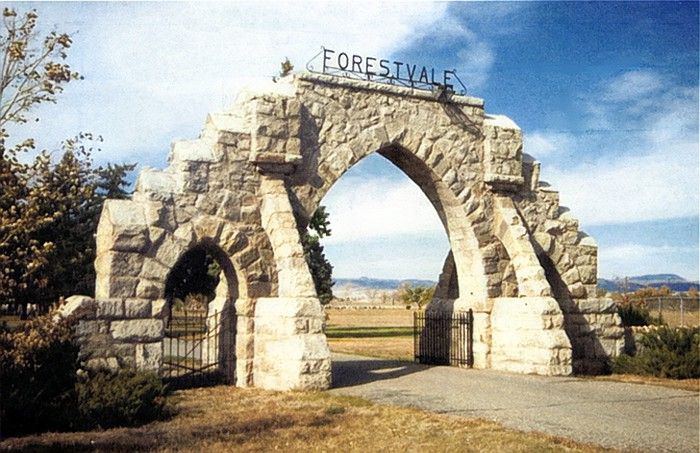
|
Founded
in 1890 as the Helena Cemetery, Forestvale Cemetery occupies
150 acres (according to current tax records) in the Helena
Valley. The name was changed to Forestvale in 1901.
There are over 14,000 individuals buried at Forestvale, including
many notable Montana pioneers. It is also the final resting
place of motion picture star Myrna
(Williams) Loy, a Helena native.
The documents
listed as sources for the information presented here are available
for download and/or linking at the end of this feature.
"In
1888, there were three public cemeteries in Helena, all of
which were owned and operated by religious organizations:
a Catholic cemetery, Jewish cemetery and the Benton Avenue
Cemetery, which was generally populated by Protestants. As
the city of Helena was expanding rapidly, growing from a population
of 3,000 in 1880 to over 13,000 in one decade, the city government
recognized the need for additional burial space outside of
the city limits. During the summer of 1889, a group of Helena
investors began to investigate suitable sites of the establishment
of a new cemetery, and purchased 140 acres located about 2-1/2
miles from town, for $3500 from Charles C. Colber and his
wife."-- National Register of Historic Places Registration
Form for Forestvale Cemetery, 1990
"There
were over 400 exhumations from other cemeteries reinterred
in Forestvale.These reinterments came from the abandoned Catholic Cemetery south
of the State Capitol, City Cemetery behind Central School, Catholic Cemetery on
Oakes, Benton Avenue Cemetery and Mountain Home Cemetery.
They were also removed from several ranches in the Helena
area, other towns in Montana, and many were removed from Beaver
Creek when Canyon Ferry Reservoir flooded the area."
-- Forestvale Cemetery Tour Guide, 2003
|

Paul S. Paulsen (1886-1952)
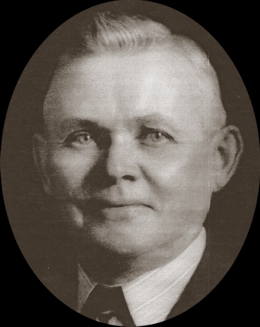
Paul S.
Paulsen, a native of Denmark, was the caretaker at Forestvale
from about 1912 to his death in 1952. Many thanks to his grandsons,
Paul E. Paulsen Jr. and Guy Duncan, for arranging the scanning
and forwarding of many of the photographs for this feature.
And of course, special thanks to Forestvale Cemetery for making
the photos available.
Thanks also to Helena historian and author Charleen Spalding
for her Forestvale photos and invaluable information. |

Annotated
2015 Map of Forestvale
Map Courtesy of Charleen Spalding
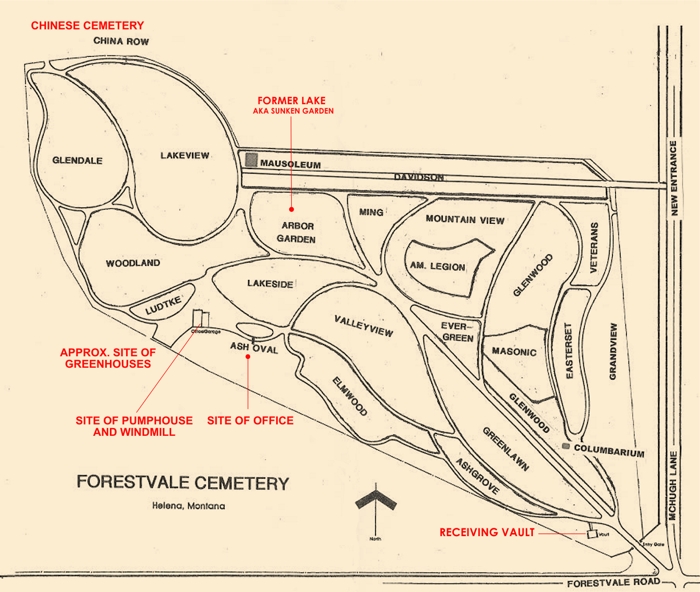
Forestvale
was designed by Vermont native Harry Vespasian Wheeler (1850-?),
a civil engineer working in Montana. He also laid out Missoula's
City Cemetery in the 1880s. Forestvale's design, featuring curving
roads, a water feature, and abundant plantings, was part of
the "garden cemetery" or "rural cemetery"
movement of the 19th Century. Read
more about it on Wikipedia.
Wheeler lived in Southern California both before and after his
years in Montana.. |

Main Gate
of Forestvale, 1890
(colorized)
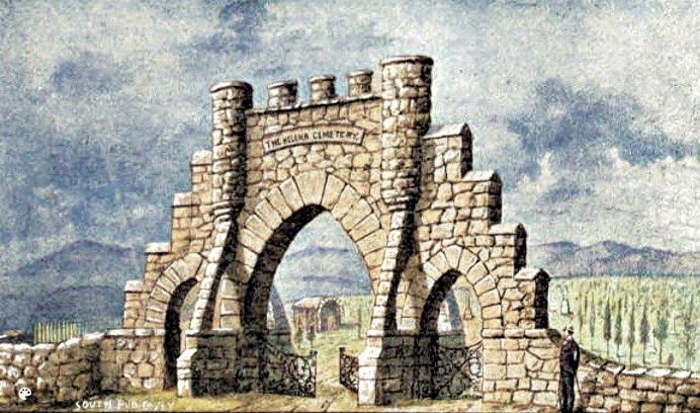
|
"Originally
the entrance had a castellated top, according to an etching
depicting the new cemetery in the 1890 publication
Helena; Its Past and Future. The words: 'The Helena
Cemetery' were cut in the stone at the top of the entrance.
The name stone and the castellation may have been removed
when the name of the cemetery was changed to Forestvale in
1901, or these alterations may have occurred in 1936 when
post-earthquake
repairs were made on the gateway." -- National Register
of Historic Places Registration Form for Forestvale Cemetery,
1990
At least
one post-1901 photograph of the castellated entrance exists,
so the top was likely removed after being damaged by the 1935
earthquakes. Here is the gate photographed from the northwest
in 1913...

|

CLICK
ON IMAGE TO OPEN A BIG VERSION IN A NEW WINDOW


|
Only one
lake of the two proposed was dug; it has been dry since about
1920, and in the 1930s was given over to burials. It was informally
called the Sunken Garden, and is now known as the Arbor Garden
section. Also never constructed was the chapel, meant to be
next to the receiving vault, near the main gate.
According
to another 1890 article in the Independent, the road
leading to the main gate of the new cemetery, now known as
McHugh Lane, was to be named Winnie Boulevard. No further
mention of that name in connection with the road was found
in newspaper archives.
|
Road
and Rail to Forestvale, 1899 Topgraphic Map Detail


The
Receiving Vault
Located Near the Main Entrance

"A
small stone building located just inside the cemetery grounds
was built during the 1890s as a receiving vault to store bodies
during the winter months until the ground thawed and allowed
for burial. In 1930, three crypts were added to the interior
of the building. The heavily rusticated, uncoursed stone bearing
walls feature five buttresses on each side. The arched entry
has double metal doors hung on exaggerated strap hinges."
-- National Register of Historic Places Registration Form
for Forestvale Cemetery, 1990
On November 8, 1891, James E. Binford, from Marysville, was
the first person recorded to have been placed in the vault.
He is buried in the Glendale section of the cemetery. |
Receiving Vault Doors, 2016
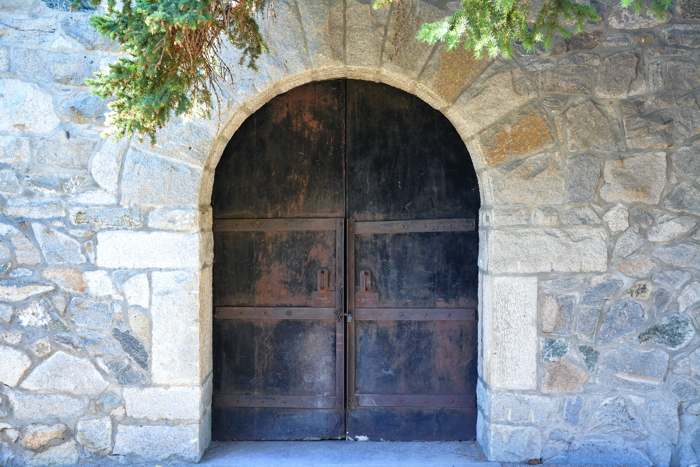
CLICK
ON IMAGE TO OPEN A BIG VERSION IN A NEW WINDOW

CLICK
ON IMAGE TO OPEN A BIG VERSION IN A NEW WINDOW
East Side of the Receiving Fault, 2016

CLICK
ON IMAGE TO OPEN A BIG VERSION IN A NEW WINDOW
West Side of the Receiving Vault, 2016
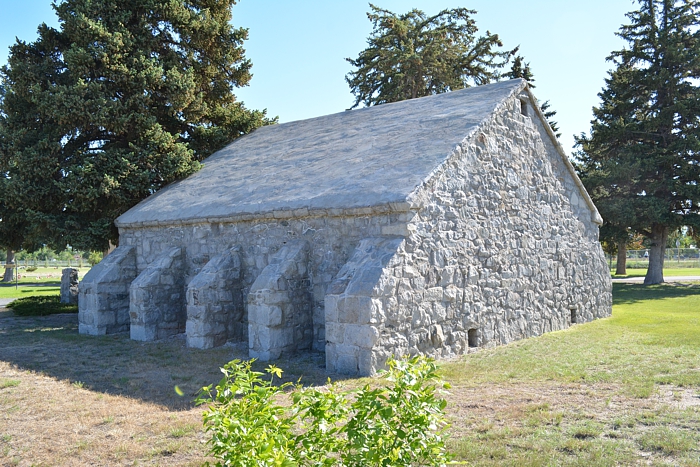
CLICK
ON IMAGE TO OPEN A BIG VERSION IN A NEW WINDOW
1930s
Crypts Inside the Receiving Vault

COURTESY
OF CHARLEEN SPALDING

Old
Views of Forestvale
Crossroads
Near Main Gate, Aug. 12, 1953 • Photo by Les Jorud
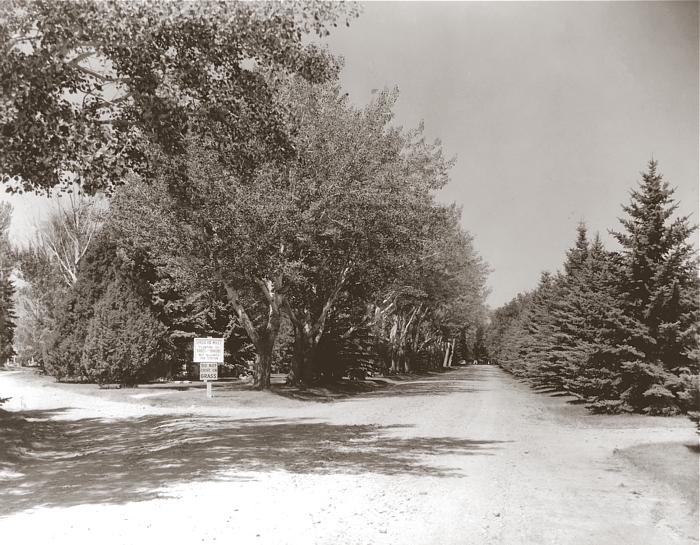
CLICK
ON IMAGE TO OPEN A BIG VERSION IN A NEW WINDOW
Looking
East Toward the Main Gate, 1913 • Photo by Emil Keller

CLICK
ON IMAGE TO OPEN A BIG VERSION IN A NEW WINDOW

Office
Building
Built 1890s - Demolished 1990s
Photo by Les Jorud, Aug. 12, 1953

CLICK
ON IMAGE TO OPEN A BIG VERSION IN A NEW WINDOW
|
The office
building was described thusly in the 1990 National Register
of Historic Places Nomination Form for Forestvale:
"The office was erected during the 1890s and is a small
gableroof, blonde brick building. The gable ends are clipped
and the roof is covered with deteriorated wooden shingles.
The office has not been used in a many years and is in poor
condition. The windows are blocked with plywood. A small wooden
awning covers the entrance stoop."
The building has since been torn down.
A fountain
featuring a sculpture of two children, one holding an umbrella,
was in front of the office building. The sculpture is now
at Shodair Hospital in Helena.
|
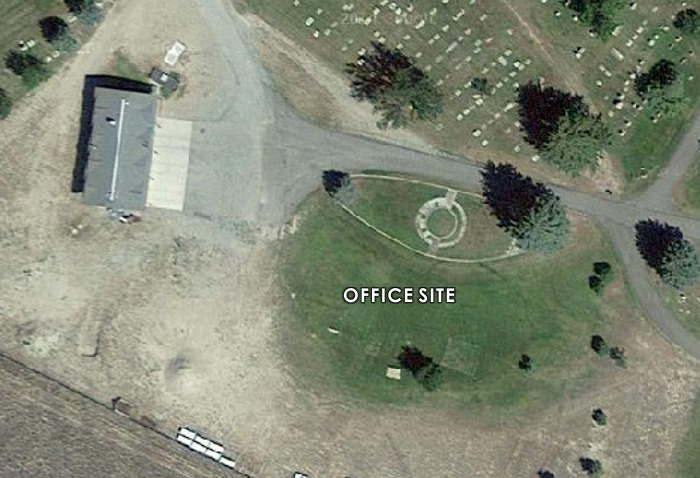
Remnants
of the Fountain at Forestvale
Statue Now at Shodair
Children's Hospital in Helena

PHOTO
BY PAUL E. PAULSEN JR
The
Forestvale Fountain Figures, at Shodair Hospital
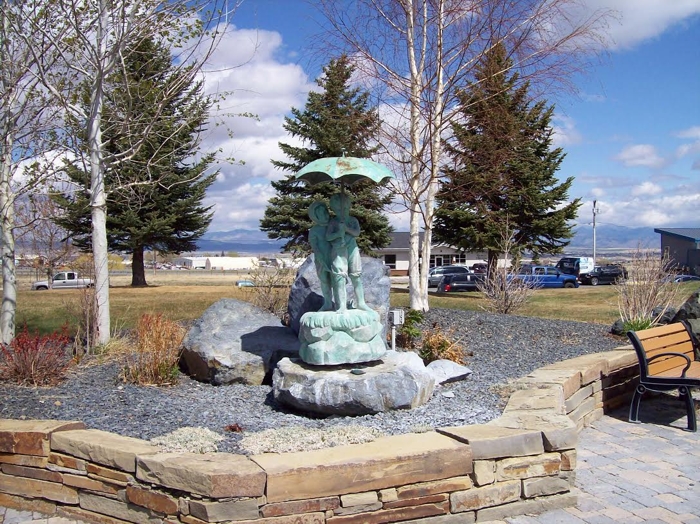
PHOTO
COURTESY OF RIC SEABROOK
Was
This Fountain in the Broadwater Natatorium?

PHOTO
COURTESY OF CHARLEEN SPALDING
| Still under
study is the possibility that this fountain -- or one identical
to it -- once stood on the rock waterfall inside the Broadwater
Natatorium. If anyone can shed light on this, please contact
me. See the images below... |
Interior of the Broadwater Natatorium, Showing Location of Fountain

Comparison
Views


Old
Views of Forestvale
Nicholas
Family Plot • Photo by Emil Keller, 1913
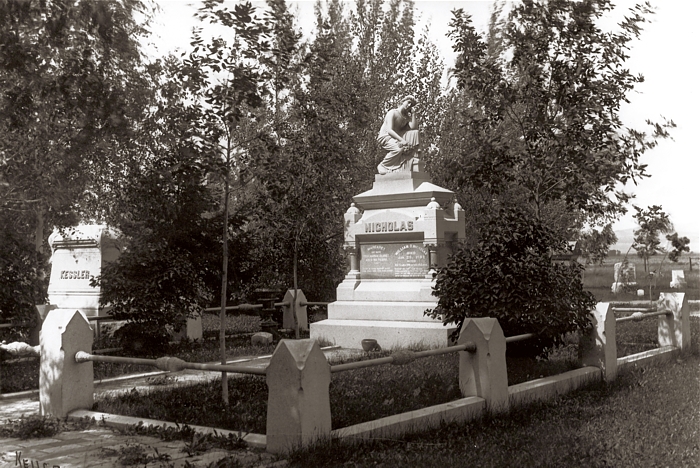
CLICK
ON IMAGE TO OPEN A BIG VERSION IN A NEW WINDOW
Forestvale View, 1930
Showing the Grave of John Setzer (1882-1930) on the Left
Photo by Anna L. Julian (1891-1973)
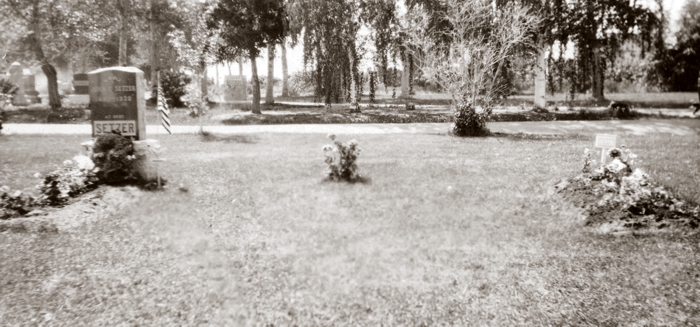
CLICK
ON IMAGE TO OPEN A BIG VERSION IN A NEW WINDOW
Veterans'
Stones • Photo by Les Jorud, Aug. 12, 1953
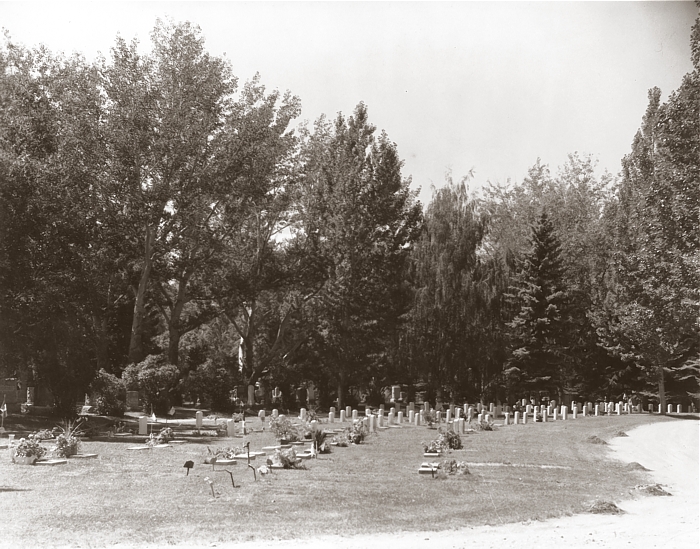
CLICK
ON IMAGE TO OPEN A BIG VERSION IN A NEW WINDOW
Forestvale
Roads • Photo by Emil Keller, 1913

CLICK
ON IMAGE TO OPEN A BIG VERSION IN A NEW WINDOW
Forestvale
Roads • Photo by Emil Keller, 1913


The
Lake
Photo by Emil Keller, 1913
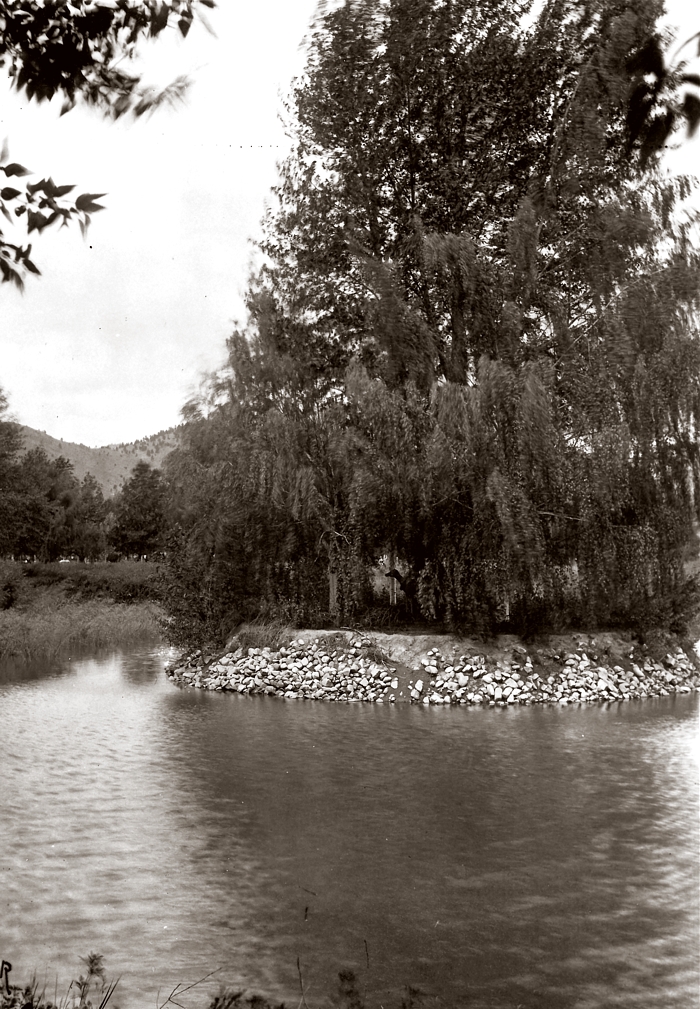
CLICK
ON IMAGE TO OPEN A BIG VERSION IN A NEW WINDOW
"During
the 1930's, after the lake had been left dry for many years,
the area was surveyed and prepared for lot sales. The depression
in the "Arbor" section of the cemetery is still
quite evident, although now covered with sod and used for burials."
-- National Register of Historic Places Registration Form
for Forestvale Cemetery, 1990 |
Weeping
Birch on Former Lake Island
Photo by Les Jorud, Aug. 12, 1953
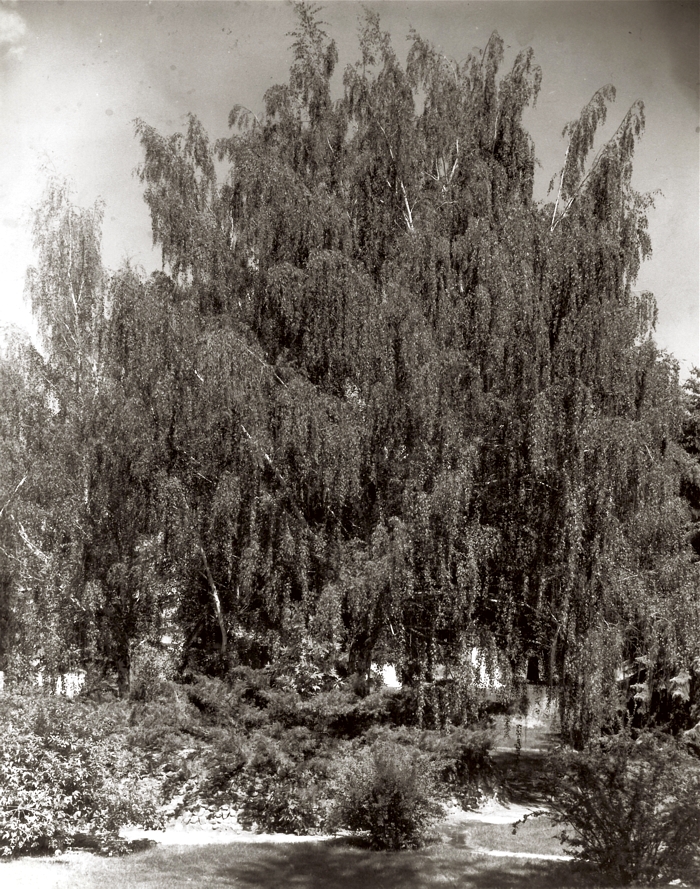
CLICK
ON IMAGE TO OPEN A BIG VERSION IN A NEW WINDOW
A
Recent Photo of the Arbor Garden

COURTESY
OF CHARLEEN SPALDING

Old
Views of Forestvale
Lillian Stoakes Cullen Figural Monument • Photo by Emil Keller,
1913
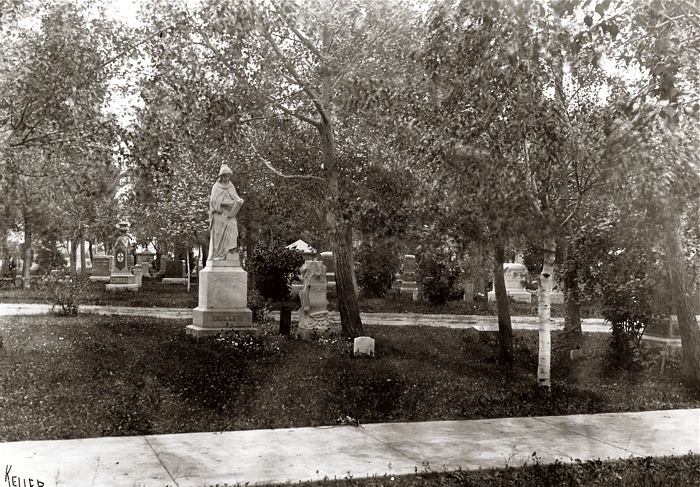
CLICK
ON IMAGE TO OPEN A BIG VERSION IN A NEW WINDOW
Masonic
Section, Photo Attributed to Les Jorud
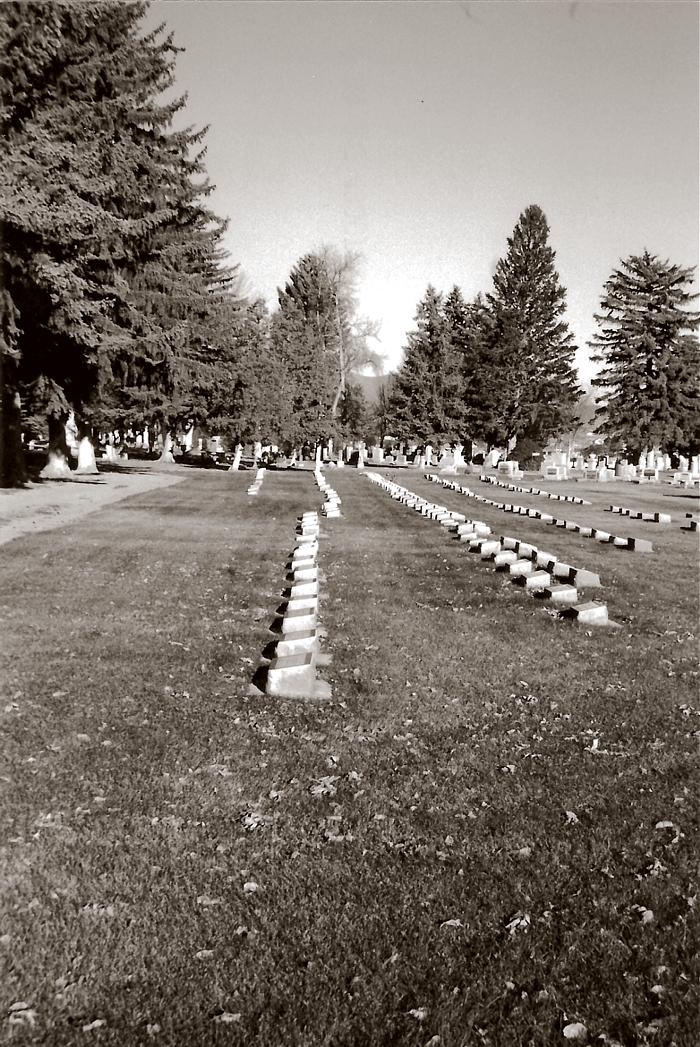
Rotwitt
and Harper Memorials • Photo by Emil Keller, 1913

CLICK
ON IMAGE TO OPEN A BIG VERSION IN A NEW WINDOW
Holter
Obelisk • Photo by Emil Keller, 1913
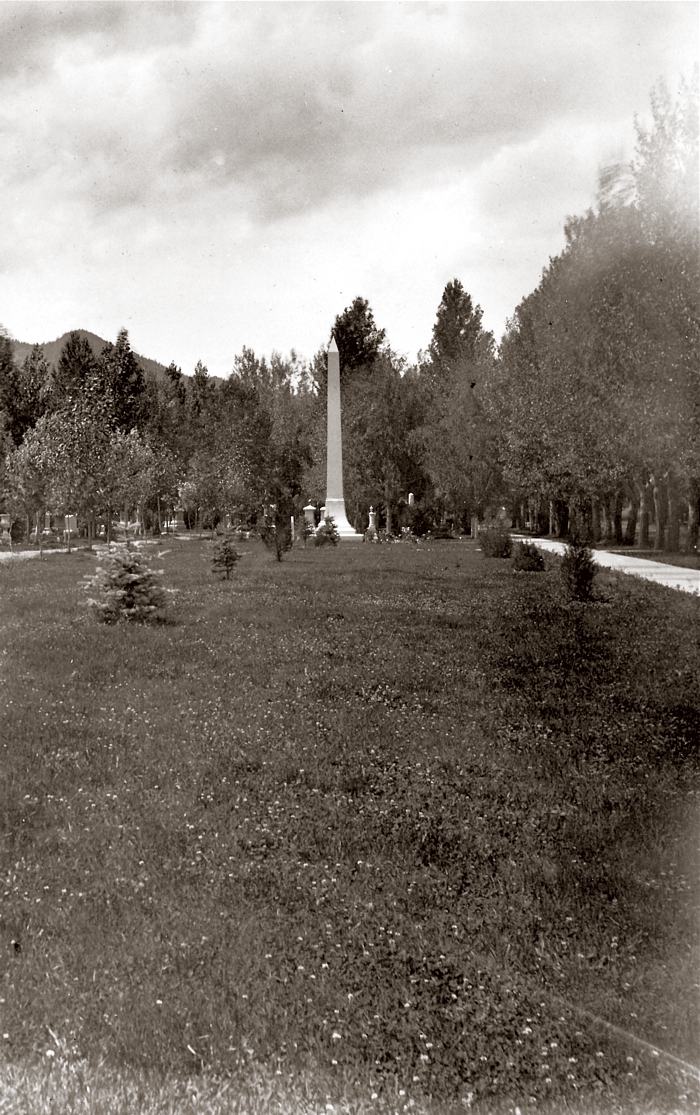
Greenlawn
Section • Photo by Emil Keller, 1913

CLICK
ON IMAGE TO OPEN A BIG VERSION IN A NEW WINDOW
Perkins
Monument • Photo by Emil Keller, 1913
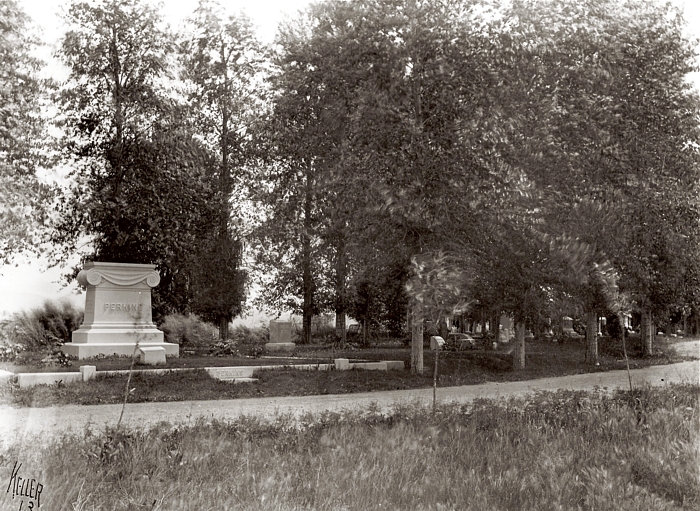
CLICK
ON IMAGE TO OPEN A BIG VERSION IN A NEW WINDOW
Gillette
and Auchard Monuments • Photo by Emil Keller, 1913
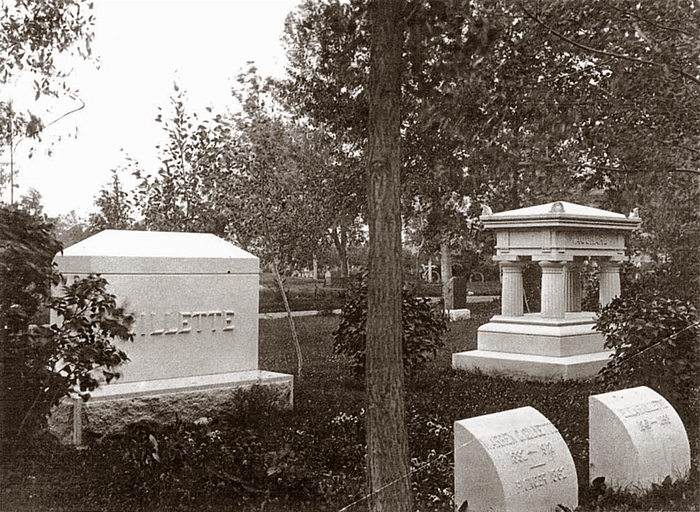
COURTESY
OF CHARLEEN SPALDING

Windmill and Pump House
Photographed in 1913 by Emil Keller

COURTESY
OF CHARLEEN SPALDING •
CLICK
ON IMAGE TO OPEN A BIG VERSION IN A NEW WINDOW
| "The
pump house, located at the southern edge of the cemetery grounds,
was built in 1893 according to plans developed by Helena architect
George S. Appleton. Frank A. Sutton won the contract for the
building at a price of $850. Originally, irrigation water was
pumped by a windmill into an overhead storage tank. In 1932,
the windmill was damaged in a wind storm and the Cemetery trustees
decided to purchase a 4500-gallon steel pressure tank from Caird
Engineering to replace the original holding tank. An electric
pump was installed and the windmill arms were removed at this
time." -- National Register of Historic Places Registration
Form for Forestvale Cemetery, 1990 |
Paul and Harold Paulsen, 1919
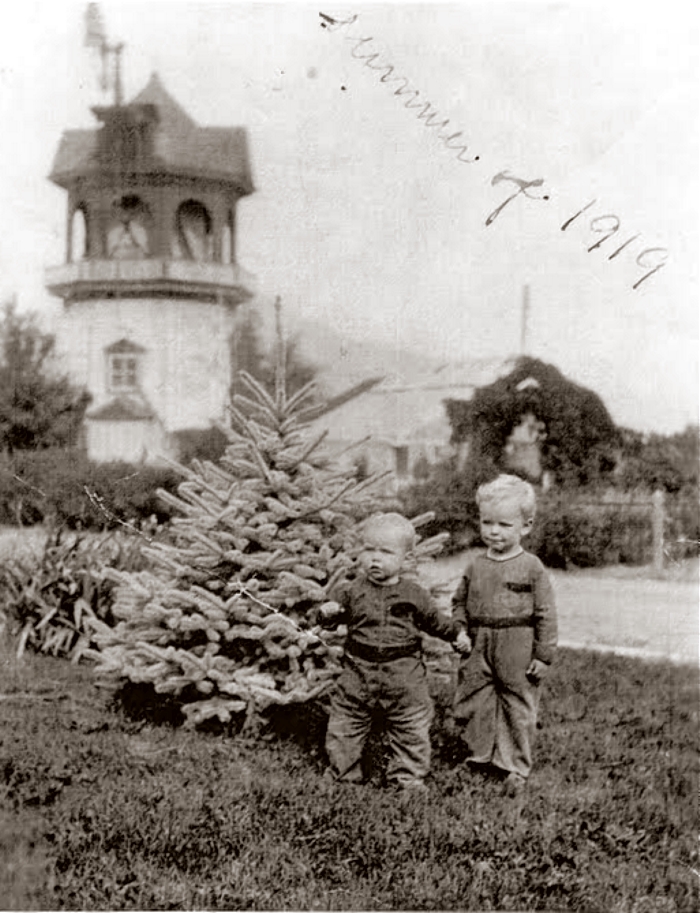
COURTESY
OF CHARLEEN SPALDING
| In the
background can be seen what are thought to be greenhouses, possibly
constructed after 1909 by local florist Henry Winter, who was
the majority shareholder and manager of Forestvale from 1909
to 1919. |
Garage,
Shed, and Remnant of Windmill, 1970s
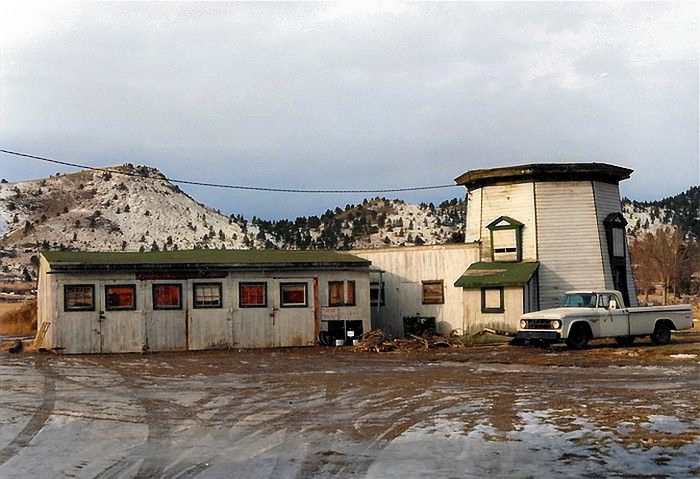
"The
triple-bay, wooden garage that is attached to the pump house
was constructed in 1936. This building is of wood frame construction
and features double, 6-light, wooden doors to the bays. The
shed roof is covered with asphalt shingles. An open, two-bay,
wood frame, shed-roofed machine shed is situated near the garage
was built during the early 1930s." -- National
Register of Historic Places Registration Form for Forestvale
Cemetery, 1990
The wooden
garage and shed have been replaced by modern utility buildings
on the same site. All traces of the windmill are gone. |
Current Forestvale Utility Building and Wellhead, 2016
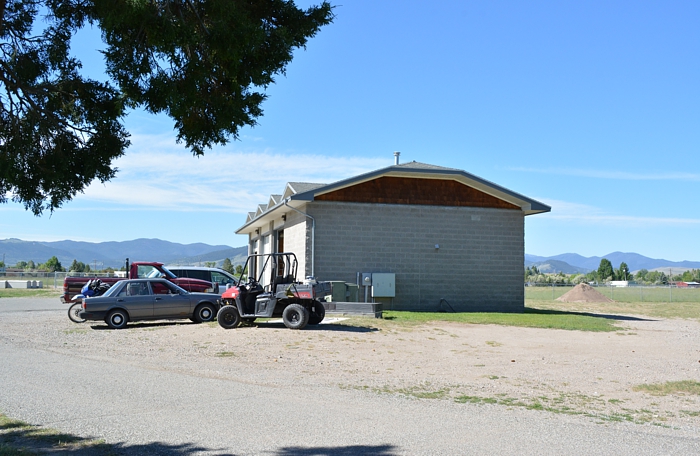

1935
Earthquake Damage
Neill
Obelisk Askew
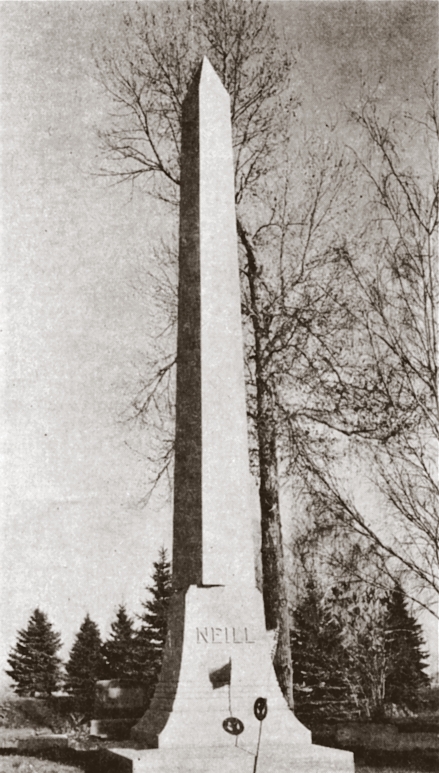
FROM
HELENA EARTHQUAKES BY C. R. ANDERSON AND M. P. MARTINSON,
1936
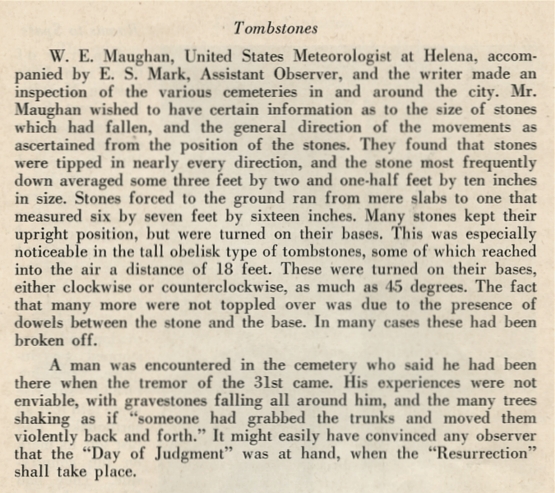
FROM
HELENA EARTHQUAKES BY C. R. ANDERSON AND M. P. MARTINSON,
1936

China
Row
Photos by Kennon Baird, 2016, unless otherwise noted
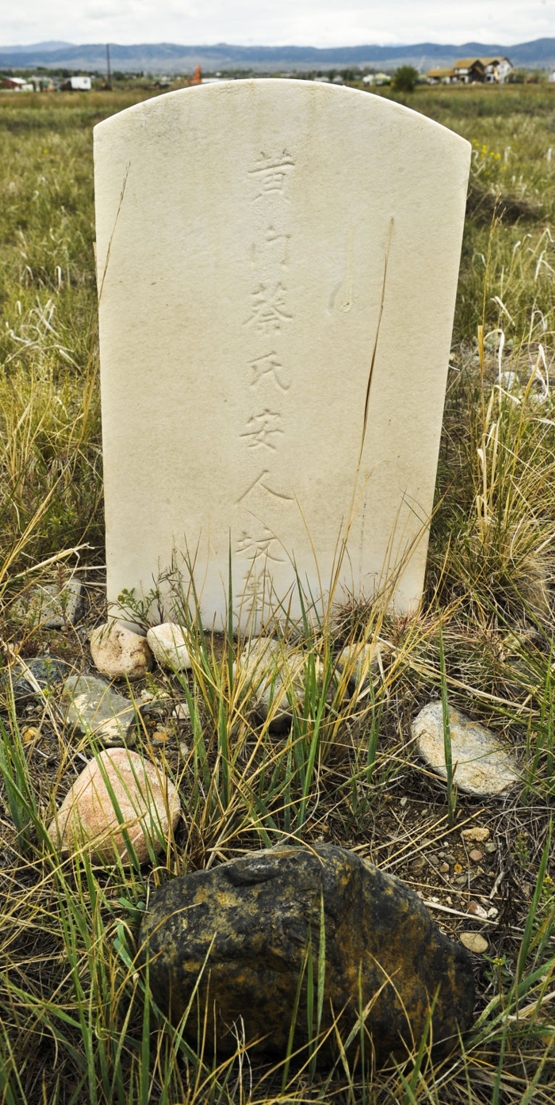
THOM
BRIDGE, INDEPENDENT RECORD

|
Located
just north of the Lakeview and Glendale sections of Forestvale
is "China Row". Between 1890 and 1955, over 200
Chinese individuals were buried there. The site includes a
few headstones bearing the name and place of birth of the
deceased, written in a mixture of English and Chinese characters.
In addition, the area has a partially intact brick funerary
burner used by the Chinese to honor their dead through various
cultural rituals.
The National
Register of Historic Places Registration Form for Forestvale
includes this about China Row:
"At
the northwest corner of the cemetery grounds, a small burial
ground for Chinese persons was set aside during the 19th century.
Within 'China Row', at least 130 burials occurred between
1890 and 1929. After 1930, an additional 23 burials occurred
in 'China Row', and seven Chinese persons were buried in other
parts of cemetery, including the six members of the prominent
Wong family who were buried in the Mountain View and Davidson
sections of the cemetery during the late 1940s-1980s. The
last burial recorded in 'China Row' occurred in 1955.
A local legend persists that the graves of persons in 'China
Row' were disinterred in the 1950s and the remains were removed
to China. However, no documentation has been found to substantiate
this claim and physical evidence indicates that only four
or five
graves in this area may have been disturbed.
Only nine marble headstones remain in the 'China Row' section,
although a number of deteriorated and illegible wooden and
metal markers may be found in the vicinity amidst the overgrowth.
The inscriptions that note the village and county of origin
of the deceased are in the Pinyin system and mark the graves
of eight men and one woman, most of whom came from the Tai
Shan area.
The
remains of a brick oven are found amidst a heavy scatter of
glass, metal clasps, buttons, and other distinctively Chinese
artifacts such as bits of opium pipes and celadon porcelain
in the 'China Row' section. Apparently as part of the Chinese
funeral services, food would be prepared and cooked at the
cemetery and placed as offerings on the graves of the deceased."
China
Row, Independent Record Article 2015
|

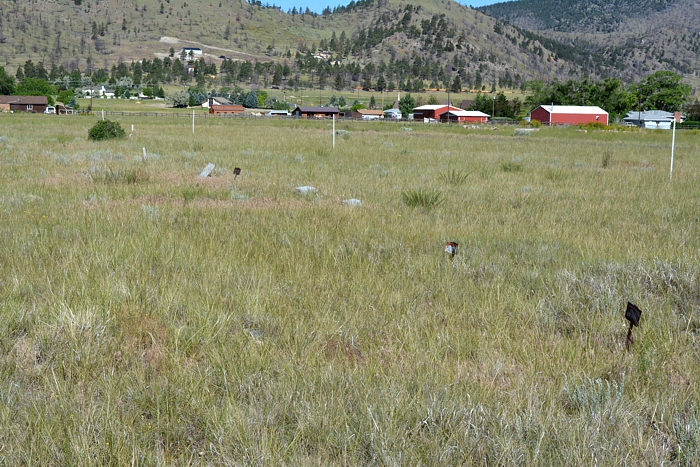
CLICK
ON IMAGE TO OPEN A BIG VERSION IN A NEW WINDOW

CLICK
ON IMAGE TO OPEN A BIG VERSION IN A NEW WINDOW
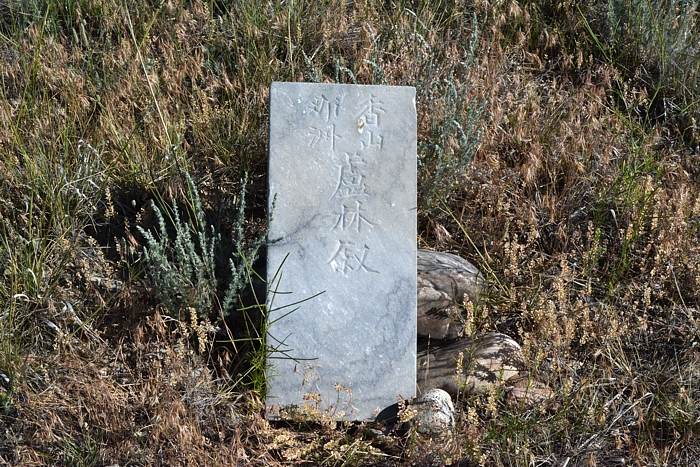
CLICK
ON IMAGE TO OPEN A BIG VERSION IN A NEW WINDOW

CLICK
ON IMAGE TO OPEN A BIG VERSION IN A NEW WINDOW
Pottery and Glass Shards
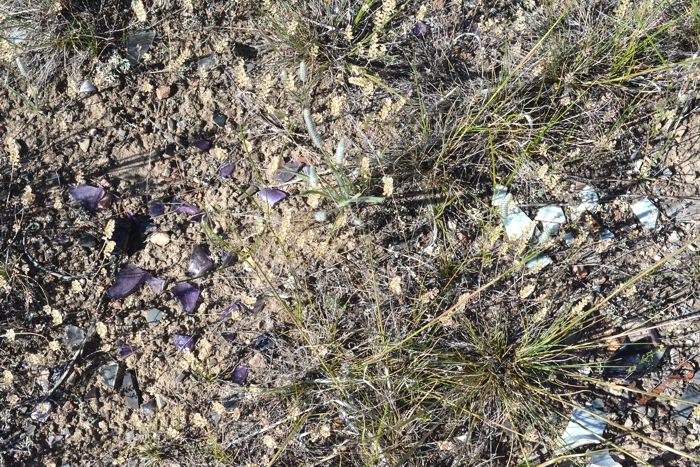
CLICK
ON IMAGE TO OPEN A BIG VERSION IN A NEW WINDOW

New McHugh Lane Gateway Under Construction,2016
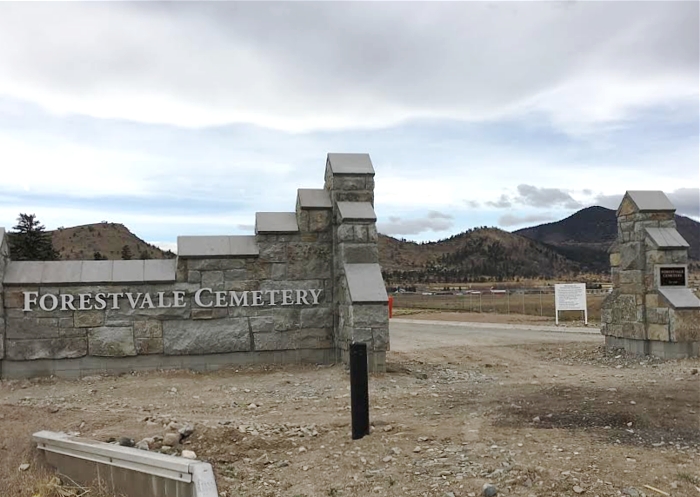
PHOTO
COURTESY OF PAM ATTARDO

Histories
of Forestvale Cemetery
National
Register of Historic Places
Registration
Form for Forestvale, 1990
Download PDF file
|

Forestvale
Cemetery Tour Guide, 2003
Download
PDF File
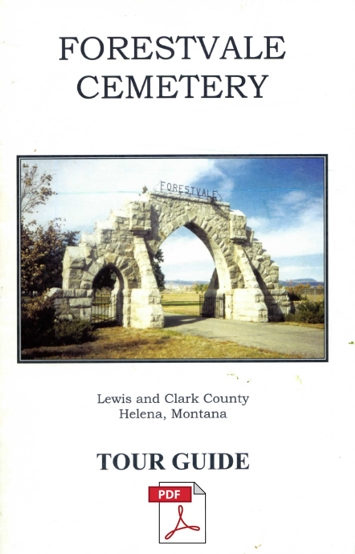
Back to The Helena Valley


























































